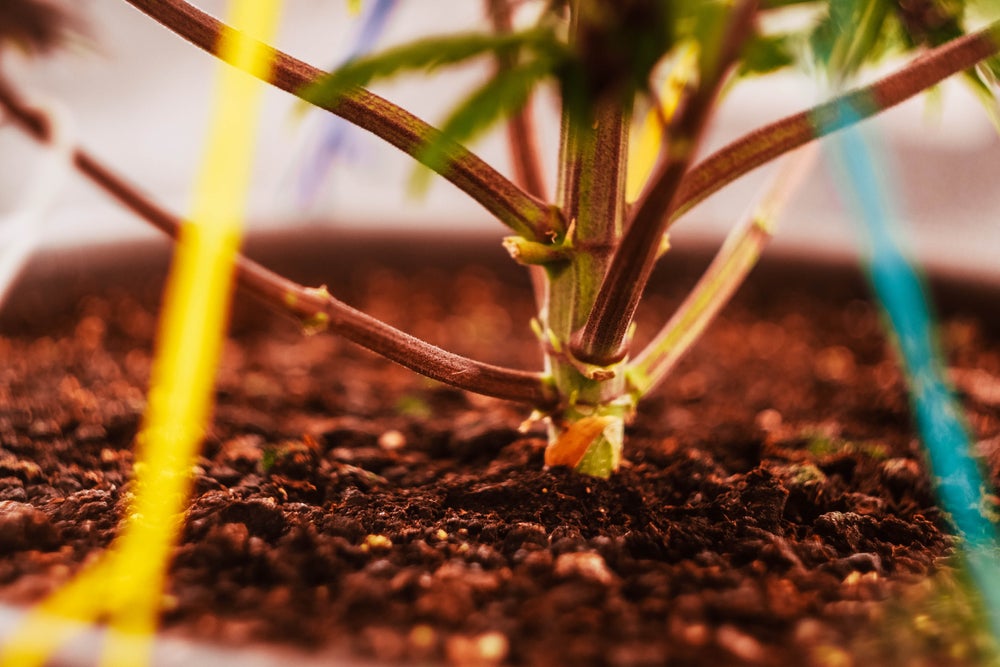Getting the most out of your cannabis garden starts early with proper training of clones in the vegetative stage. Techniques like low-stress training (LST), topping, fimming, and supercropping manipulate young plants to shape desirable traits that maximize flowering yields down the road. Training directs growth, distributes hormones, and promotes more evenly developed colas through targeted stress. Let’s explore the most effective methods for training your cannabis clones.
Low-Stress Training (LST)
As the name implies, LST gently bends and ties back branches to make plants shorter and bushier with more even canopy. This opens up light exposure to lower sites. LST is ideally started as soon as clones are rooted or shortly after transplanting.
Use soft plant ties to carefully pull branches down and secure them along the edges of pots. Position ties so that branches are trained outwards at 90 degree angles. Be gradual over multiple sessions to avoid snapping stems. Aim to create a flattened, table-top shape with branching increased horizontally.
As vertical shoots emerge from existing branches, continue training those outwards as well. Weave and spiral the growing shoots through the ties. Perform LST consistently throughout the entire vegetative stage before switching to flowering.
Topping
Topping means cutting or pinching off the main apical stem of plants. This halts upward growth and causes lower shoots to vigorously sprout. Topping redirects hormones and energy to create multiple cola sites rather than one dominant top.
Wait until clones are well established with 5-6 nodes or node pairs. Cut just above the 3rd or 4th node using sterilized scissors or pruners. Two shoots will now compete to become dominant leaders. Topping can be done again to further multiply colas. Allow at least 1-2 weeks recovery between toppings.
Fimming
Fimming stands for “F*ck, I missed!” It involves partially cutting the very top of the main stem around the newest growth shoots. This stops apical dominance similar to topping but leaves behind a tiny portion of tissue. Fimming slows vertical growth slightly less than topping.
Use small scissors or pruners when newest shoots are still short and pinch or cut across about 75% of the stem. Remaining tissue will split into multiple shoots. Fimming can be repeated every 2 weeks in veg. It results in plants that stay a bit taller than topping while still producing numerous colas.
Supercropping
Also called high-stress training (HST), supercropping compresses the inner stem to interrupt sap flow and hormones. This triggers lower dormant shoots to grow vigorously upwards seeking light. Results are bushy plants with multiple dominant leaders.
Pinch and roll the main stem between thumb and forefinger to partially crush the inner tissues. Use gentle pressure – the goal is only partial damage, not snapping the stem. Bind the pinched area after with ties to protect the weakened stem. Perform supercropping once plants are more mature, not on young clones.
Manifolding
Manifolding combines topping and LST to create a ring of shoots trained horizontally that become thick cola stems. Start when plants are young and top above the 3rd node. Use ties to train the two new shoots horizontally in opposite directions.
Continue topping each new shoot again above the 3rd node as branches elongate. Keep training the new shoots horizontally. After 4-6 toppings and training the shoots horizontally, you will have an evenly spaced circular manifold of future colas.
Benefits of Training Cannabis Clones
All these techniques redirect plant energy and hormones to create shorter, bushier plants with more even flower production. Training clones fills out the canopy for improved light interception. A flat even canopy allows optimal light exposure for the most bud sites.
Along with bigger yields, trained plants tend to produce larger, thicker colas. Light can better penetrate inner and lower regions. Training also makes plants easier to manage compared to tall, vertical untrained specimens.
By implementing training early and consistently in the vegetative stage, cannabis plants can be shaped into ideal forms for maximized flowering performance. The time invested pays dividends later when flowering the squat, bushy, multi-topped plants. Take advantage of cloning to try different training techniques and see what works best for your garden goals and setup.
Click here to read all of our blogs. For in-depth information on Cannabis Clones, our articles on What Is Cannabis Vaping And How Does It Work?, CBD vs. THC: What’s The Difference?, and Advantages of Growing Cannabis Clones Vs Seeds provide comprehensive coverage.













